CarEdge saved me over 4,500 dollars on a brand new Honda Pilot. I can't say thank you enough.
Price intelligence
Find a wide range of vehicle listings with market insights on new and used listings near you.


Help us personalize your CarEdge experience — it only takes a second.
Your answers help us personalize your CarEdge journey — we’ll follow up with tips and next steps that match your buying timeline.

As much as I love electric vehicles, their faults are not lost on me. Charging infrastructure lacks, service outside of warranty is costly, and most of all, they’re really expensive. Despite the hurdles facing EVs in 2022, a new Bank of America Merrill Lynch Car Wars study predicts that EVs, PHEVs and hybrids will make up 60% of new models in 2026. With so many new electric cars coming making debuts in 2023 and 2024, time is running out to prepare the masses for the big changes ahead.
Every year, Bank of America Merrill Lynch releases their cleverly-named Car Wars report. The report leverages the bank’s access to big data to forecast automotive industry trends like no other. In the 2022 Car Wars Report, John Murphy, a senior auto analyst at Bank of America Merrill Lynch, told Automotive News that he expects automakers to launch roughly 245 new models over the next four years. That averages out to 61 new models per year — 50 percent higher than the average over the past two decades.
Why the flood of new car models? Simply put, new powertrains inspire new models. No one wants to retrofit a billion-dollar electric powertrain onto a decades-old chassis.
Analysists took the strategies of each major automaker into consideration and shared their market share forecasts for model year 2025. Notably, Stellantis and Nissan are forecast to lose market share despite funneling billions of dollars into new electrified models. General Motors, Honda and European brands are forecast to maintain steady market share in the U.S. market. With the upcoming Silverado EV, Cadillac Lyriq and Equinox EVs just around the corner, it’s not what automakers like to hear at such a crucial moment.

The automakers with the highest model replacement rate fared best in the Car Wars analysis. Ford, Toyota and the Korean automakers have the highest expected replacement rate, and therefore are expected to gain market share.
However it’s what Bank of America thinks about Tesla that’s drawing headlines.

In the annual Car Wars study, Bank of America Merrill Lynch senior auto analyst John Murphy predicts that Tesla’s EV market share will drop from over 70% today to just 11% in 2025. That’s the most pessimistic Tesla forecast we’ve seen in a few years, harkening back to when talking heads from legacy automakers regularly predicted doom and gloom for Tesla.
Why the forecasted 60% drop in market share? Murphy cites the massive push to electrification from the likes of Ford, General Motors, Hyundai and Kia. It’s not clear if Murphy considered the significance of Tesla’s Supercharger Network, top-notch over-the-air update capabilities and high brand loyalty in his forecast. What do you think?
Looking for EV sales numbers? July is here, and that means the second quarter of 2022 has come to an end. As automakers release their Q2 2022 EV sales numbers, be sure to check the latest updates and statistics at CarEdge’s EV market share and vehicle sales report.
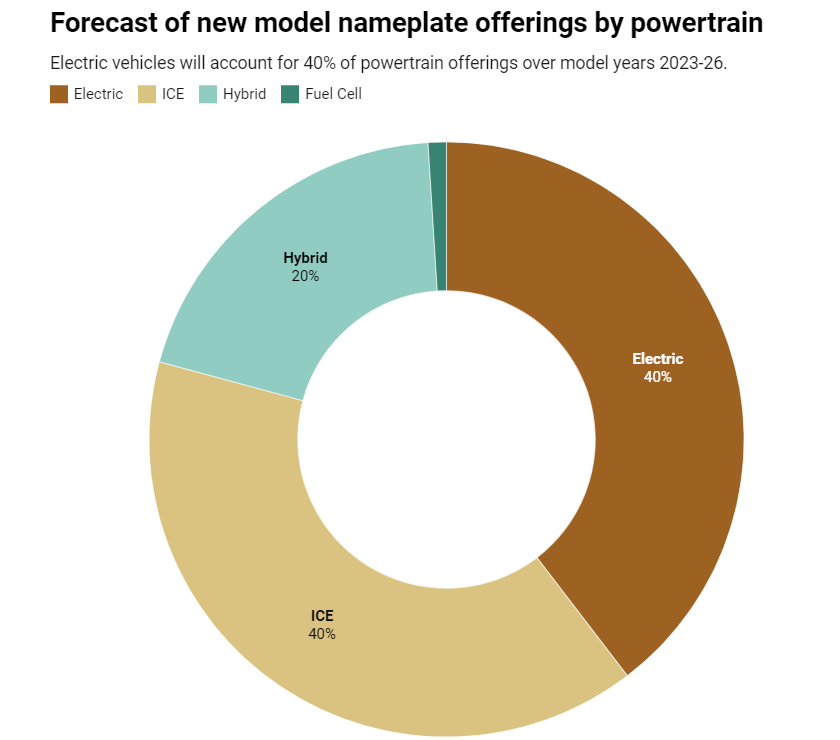
Of the new models introduced between 2023-2026, 60 percent will be either electric or hybrid while 40 percent will be internal combustion. Among notable 2023 electric cars just around the corner are electric trucks, sedans, and a whole lot of crossovers.
Headline-grabbing claims aside, this EV market share forecast is in line with much of the industry’s thinking. In fact, automakers are sure to hope that these numbers become reality, as they are actively investing a cumulative total of roughly $500 billion dollars in electrifying their lineups.
With high-stakes new electric cars in 2023, legacy automakers are definitely taking EVs seriously. Which 2023 electric car are you most excited about?

As drivers warm up to the idea of going electric, every electric vehicle recall is sure to turn heads, regardless of severity. 2022 is a huge year for automakers unveiling their next generation of electric vehicles. With over half a trillion dollars invested in EVs, there’s a lot riding on the success of these new arrivals. Several electric vehicle models have already been subjected to recalls. Fortunately, most of them do not directly involve electric powertrains. These are the EVs facing recalls in 2022. We’ll update this page as future recalls are inevitably announced.

October 2022 – Rivian recalled every vehicle it has produced, including all R1T electric trucks, R1S electric SUVs, and EDVs produced for Amazon. The vehicles were recalled because of concerns that a bolt in steering assemblies wasn’t sufficiently tightened.
No accidents have been reported, but the recall is still causing massive headaches for the young automaker. The recall fix is already available, it’s as simple as tightening a (very important) screw. However, the challenge lies in the limited locations of Rivian Service Centers. For example, the state of Texas has one service center in Houston. There are just 5 Rivian service centers on the entire East Coast. Most locations are in California. See the full list of locations.
Fortunately, Rivian has mobile service technicians, but they’ll surely have their hands full. See additional details on the Rivian recall here.
June 23, 2022 – The Toyota bZ4x and Subaru Solterra are EV siblings co-developed by the two Japanese automakers. Just a month into deliveries, the two models have been recalled globally due to an issue with their wheel hub bolts that could in fact cause the wheels to fall off. Fortunately, the issue does not involve Toyota and Subaru’s brand-new electric powertrain.
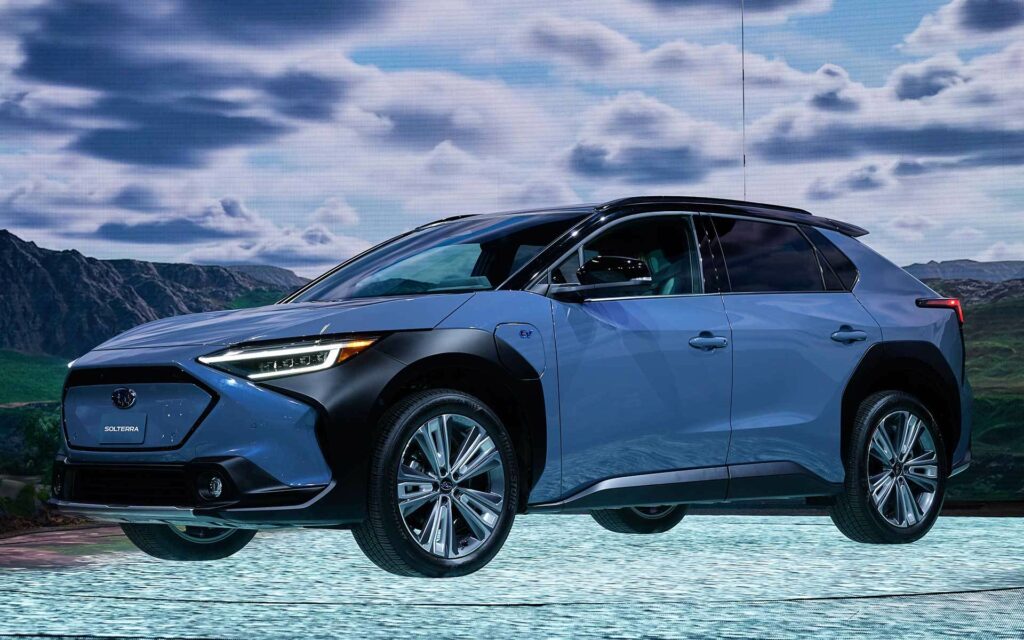
The US National Highway Traffic Safety Administration (NHTSA) recall notice warns owners not to drive their vehicles until they are repaired. This isn’t a good look considering the significance of Toyota’s first all-electric vehicle. A bZ4X and Solterra recall remedy is currently under development according to the US NHTSA.
“The cause of the issue and the driving patterns under which this issue could occur are still under investigation,” the notice says.
The recall affects 2,700 bZ4x models and 2,600 Solterras globally. See if your Toyota bZ4X VIN number is subject to the recall at Toyota’s official recall page. You can check if your Subaru Solterra is impacted at Subaru’s official recall site.
June 27, 2022 – The electric F-150 Lightning is the most-anticipated new model making a debut this year. Ford Motor is recalling 2,906 F-150 Lightnings because of a software issue that could result in a failure to provide low tire pressure warnings. The 200,000 F-150 Lightning reservation holders are certainly relieved to find that this recall is not related to Ford’s all-new electric powertrain.
In this particular recall, simple human error is at fault. Ford says that the recommended tire cold inflation pressure was incorrectly set to 35 psi instead of 42 psi. No accidents have resulted from this F-150 Lightning recall, but it’s the fix that’s noteworthy. The recall gives Ford a publicized opportunity to show the world that the F-150 Lightning is OTA capable. Over-the-air updates, first implemented on a large scale by Tesla, are no easy feat. Plenty of automakers can update navigation and infotainment via OTA update, but few are capable of firmware OTA updates that tinker with the powertrain.
Learn more about how over-the-air updates are changing how cars get serviced.
F-150 Lightning Recall Fix: Those who wish to receive the recall fix immediately may head to a Ford dealership service center immediately. Otherwise, Ford says the over-the-air update will be available to download via home WiFi within a few weeks. Check to see if your F-150 Lighting VIN number is impacted by the recall at Ford’s official recall page.

May 13, 2022 – As an IONIQ 5 owner myself, I was not thrilled to see the first manufacturer recall coming in one month into ownership. The US National Highway Traffic Safety Administration (NHTSA), Hyundai and Kia have announced a recall for select VIN numbers of the 2022 model year Hyundai IONIQ 5 and Kia EV6.
The IONIQ 5 and EV6 share Hyundai Motor Group’s new e-GMP electric platform. The recall is for the potential for disruptions to the vehicle’s parking actuator system when the vehicle is off. Sudden voltage fluctuations may occur while the vehicle is off, potentially causing the parked vehicle to disengage from ‘Park’ momentarily. If this occurs while the vehicle is parked on uneven terrain, vehicle rollaway is possible.
IONIQ 5 and EV6 recall fix: A fix is already available, but you’ll have to visit your Hyundai or Kia dealership service center. I just got the recall fix done at my local Hyundai dealer. They had never seen an IONIQ 5 before, and one employee asked if I was coming in for an oil change. Nevertheless, I was in and out of the dealership in about 30 minutes.
Check to see if your Hyundai IONIQ 5 is involved in this recall at Hyundai’s official recall page. You can see if your Kia EV6 is impacted at Kia’s official recall page.
Learn more about the IONIQ 5 recall here. Unfazed by the recall and looking to buy an IONIQ 5? Here’s how I found a Limited AWD IONIQ 5 at MSRP. It wasn’t easy.
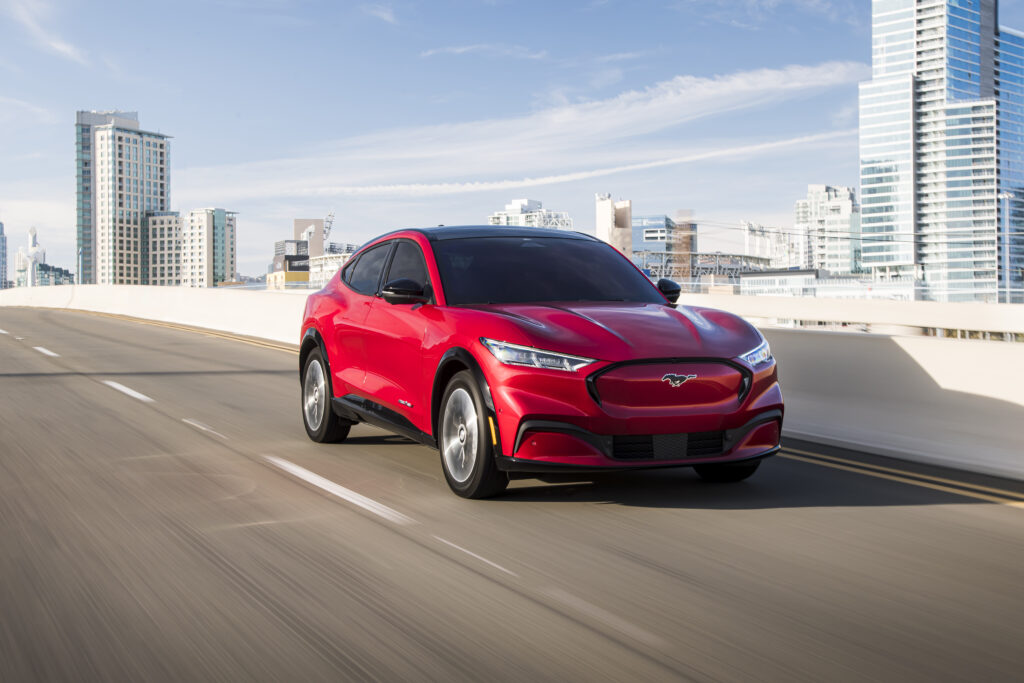
June 14, 2022 – Ford is recalling all 50,000 Mustang Mach-E electric crossovers because of the risk of power loss. The possible power loss could occur while the vehicle is in motion or parked.
The recall is due to problems with the Mustang Mach-E’s battery contactor, which is a switch that determines which vehicle components the battery sends power to. Interestingly, the power loss is more likely to occur when putting the pedal to the metal for maximum acceleration, according to Ford. If power loss occurs, a powertrain malfunction warning light will illuminate on the dashboard, and the vehicle will display “Stop Safely Now’ in the gauge cluster behind the steering wheel. Clearly, it’s time to pull over immediately with a message like that.
Ford Mustang Mach-E recall fix: Ford has pursued Tesla in more ways than one. In addition to ending EV lease buyouts and going for direct-to-consumer sales via Ford Model e, Ford has brought over-the-air updates to its lineup. Ford says that Mustang Mach-E owners will receive an over-the-air update sometime in July to install a software remedy for the recall. Until then, a stop-sale is in place.
Learn more about the Ford Mustang Mach-E recall at Ford’s official recall page.
Several hundred automotive recalls happen every year across vehicle classes and powertrains. There will surely be more to come. What we’ll be keeping an eye on is how the latest electric powertrains are performing. Luckily, most of the EV recalls to date have been for components other than the electric powertrain. However, we all remember how the Chevrolet Bolt recall and fire hazard tarnished GM’s reputation. Check back for the latest updates!

Hyundai and Kia’s new e-GMP electric platform has seen plenty of success (and a few hiccups), and the Korean giants are just getting started. Everyone from Tesla die-hards to Bloomberg News heap praise on the new IONIQ 5 electric crossover. I love it so much that I even bought one for my family. However, not everyone wants a cavernous crossover. There’s still a sizable market for sedans, especially electric sedans with impressive range and performance figures. Enter the 2024 Hyundai IONIQ 6, the next in line to debut from Hyundai Motor Group’s quickly growing electric lineup.
How much does the IONIQ 6 cost? What’s the range, charging speed and battery size? We finally have some answers. Here’s what we know. Check back as this page will be updated as Hyundai released more information.
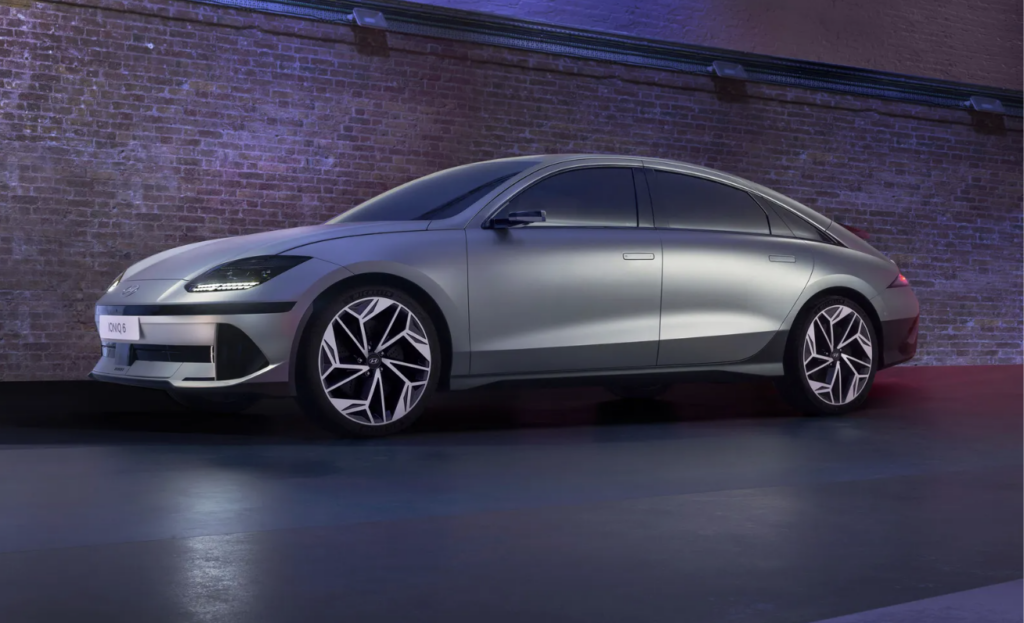
What did we all drive before 75% percent of us drove crossovers, SUVs and pickup trucks? You guessed it, sedans. Despite record gas prices, sedans haven’t rocketed to popularity quite as they had in previous gas price spikes. Is there any hope for the future of sedans? If we turn to the world of EVs, clearly there is. Tesla’s Model 3 continues to sell hundreds of thousands of Model 3s annually, outselling the likes of BMW and Mercedes ICE sedans.
In the realm of electric mobility, range is king. Range will reign supreme until charging stations are widespread and reliable, which is likely years away. Electric sedans offer a major advantage over other EVs, despite a lower profile and lesser interior volume. Electric cars dominate range and efficiency. They’re more aerodynamic, and it shows in the official numbers.

Tesla’s Model 3 gets well over 350 miles of range, and the new Lucid Air luxury sedan exceeds 500 miles on a charge. Now, Hyundai’s IONIQ 6 electric car is joining the gaggle of electric sedans. Will it be the new range king? probably not, but it’s likely to offer far more miles on a charge than its crossover relatives.

In 2020, there was a lot going on in the world, so you probably don’t remember Hyundai’s string of electric future unveilings. One of them was the ‘Prophecy’ concept. Another was the Hyundai ‘45’ concept, which was later brought to life as the award-winning IONIQ 5. Many noticed that Hyundai did the unexpected: they made a concept car into reality with minimal design changes. How was this possible? It turns out the interior and exterior designers get to have lots of fun with EVs due to the flexibility of the electric platform. Batteries lie beneath the floor, and electric motors are the size of a duffle bag. Now, we can see that the IONIQ 6 follows the same path to production, and that’s a great thing!
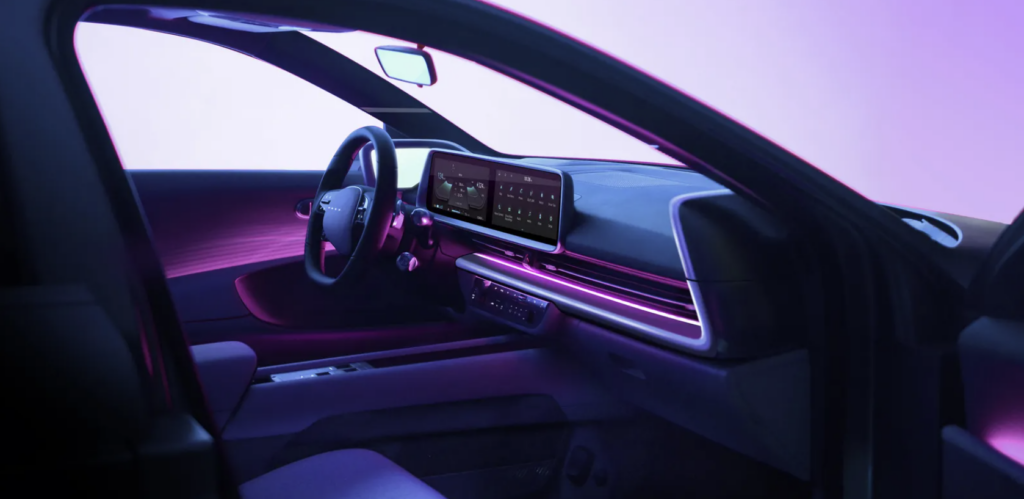
Hyundai has been teasing the IONIQ 6’s specs for weeks now. Here’s what we know:
Looking for an electric vehicle available sooner that the IONIQ 6’s 2024 arrival? Here’s every EV’s availability and wait times.
Check back for the latest updates. More information will be available from Hyundai soon!
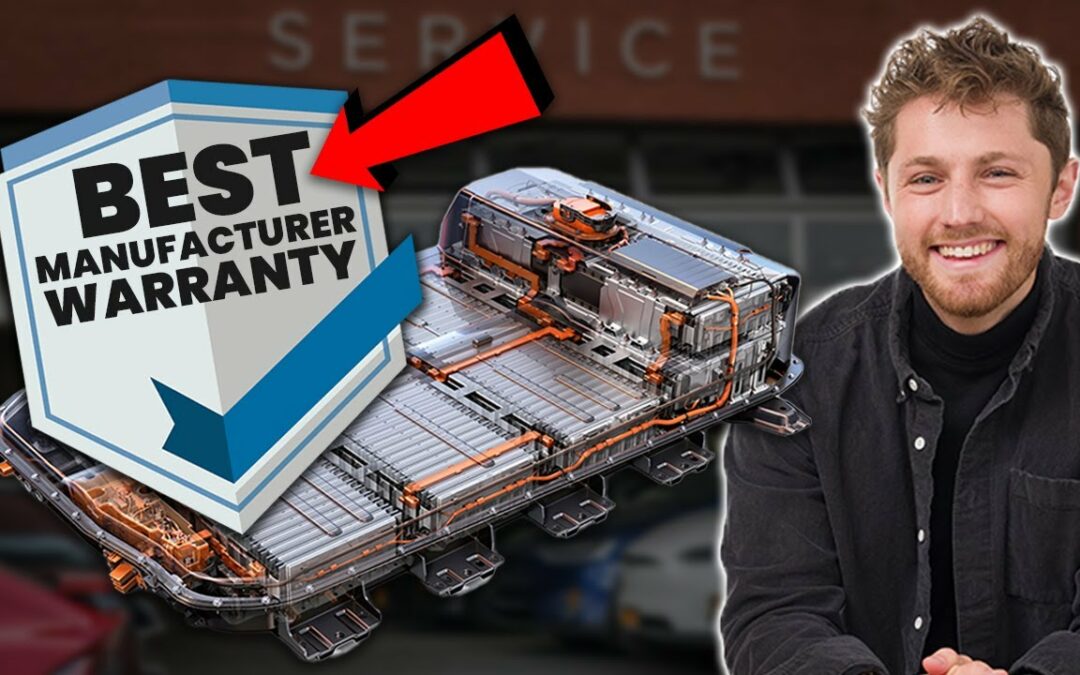
Electric vehicle batteries are expensive to replace — often $10,000 to $20,000 for a fully electric car. While battery costs are expected to drop in the coming years, today’s EV drivers need strong warranty coverage to protect their wallet.
By federal law, all EV and hybrid batteries must be covered for at least 8 years or 100,000 miles. In California, that coverage extends to 10 years or 150,000 miles. But not all warranties are created equal. Some go further than others when it comes to battery degradation, replacement criteria, and coverage for second owners.
So, which EV brands offer the most comprehensive battery warranties in 2025? The top spot might surprise you.
Rivian (8 years or 175,000 miles)
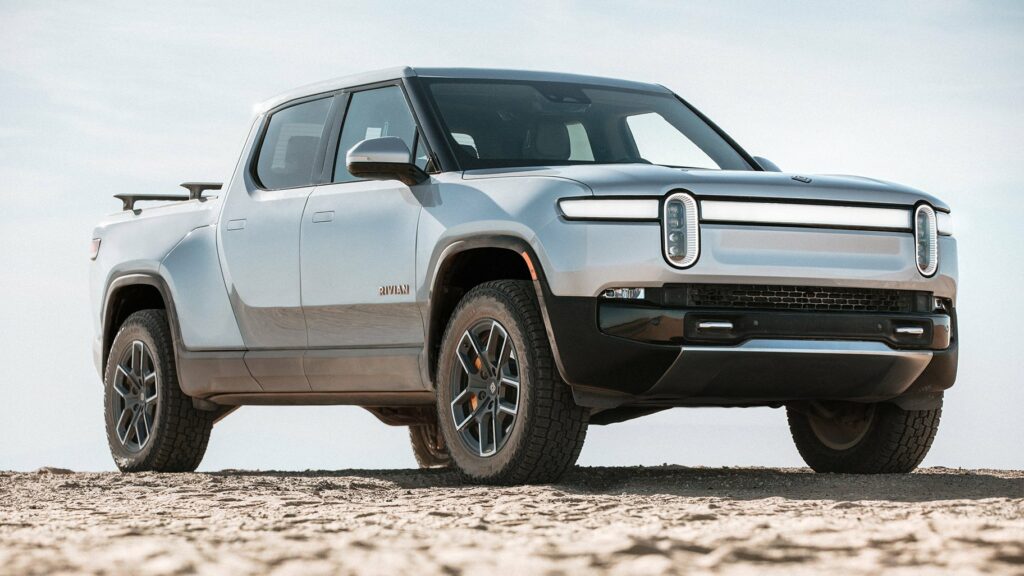
Surprise! The best EV warranty is offered by Rivian for the all-new R1T electric truck and R1S electric SUV. Coverage includes all components inside the high-voltage battery and 70% or more of the battery capacity for 8 years or 175,000 miles, whichever comes first.
Drivetrain components are also covered for 8 years or 175,000 miles. It can be unnerving to purchase a vehicle from a startup like Rivian, so at least they’re offering the best battery warranty there is. Learn more about Rivian’s warranty here.
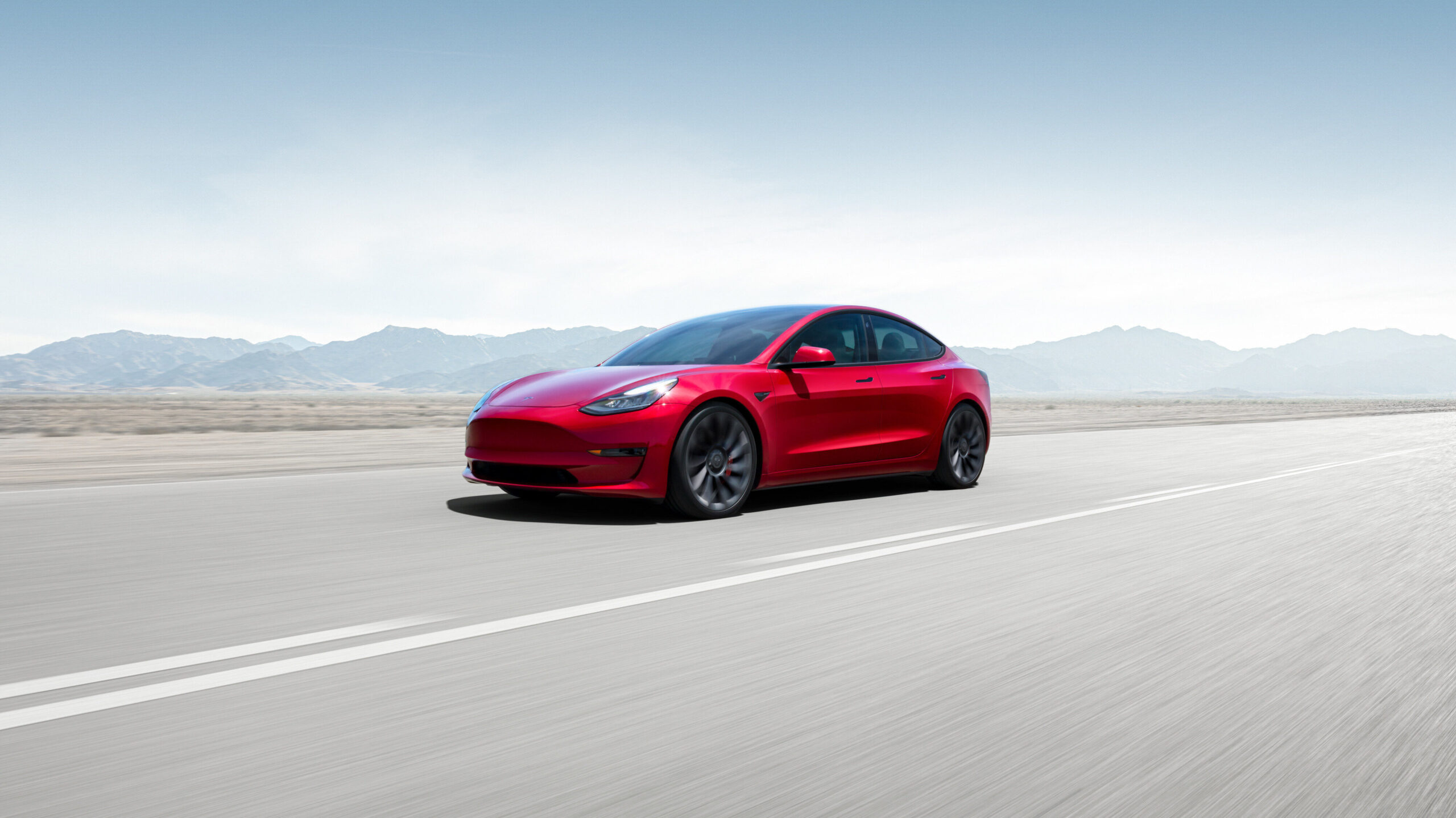
Tesla’s electric powertrain warranty is split into two tiers.
Learn more about Tesla’s battery warranty.
Hyundai and Kia (10 years or 100,000 miles)
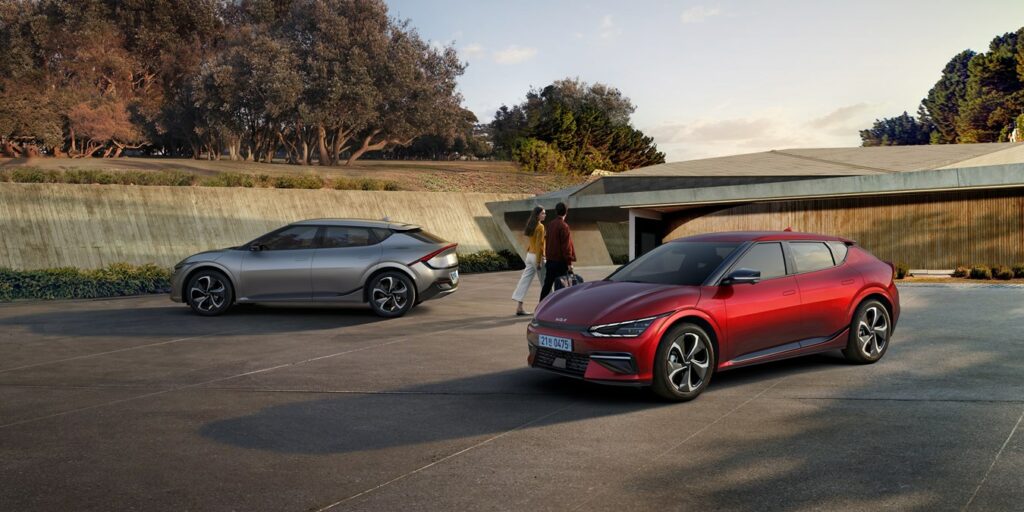
When shopping affordable EVs, you can’t beat Hyundai and Kia’s 10 year/100,000 mile EV warranty. The Hyundai EV warranty covers batteries, motors and powertrain components. There’s also the guarantee of at least 70% battery capacity retention. Hyundai lays it out clearly: “While all electric-car batteries will experience degradation over time, ours will not degrade more than 70 percent of the original capacity during the warranty period.”
Learn more about Hyundai’s electric vehicle battery warranty. You can find Kia’s EV warranty details here.
In 2025, it looks like the industry standard for EV manufacturer warranties is 8 years or 100,000 miles, whichever comes first. This manufacturer warranty applies to the following electric vehicles in 2024:

GM electric models like the Chevrolet Equinox EV, Blazer EV, and Cadillac Lyriq have 8 year/100,000 mile battery warranties with a notable catch. The battery retention portion of the warranty will replace the battery if it falls below 60% of the original capacity under coverage. See the full details here.
Q: What do EV battery warranties cover?
A: Most EV battery warranties cover defects in materials and workmanship, as well as capacity loss beyond a certain threshold (usually 70% of the original capacity). If your battery fails or degrades too quickly, it should be repaired or replaced under warranty.
Q: How long are EV battery warranties?
A: Federal law requires at least 8 years or 100,000 miles of coverage. In California and other CARB-aligned states, coverage extends to 10 years or 150,000 miles. Some automakers go above and beyond these minimums.
Q: Who has the best EV battery warranty in 2025?
A: As of 2025, Hyundai and Kia offer some of the most generous EV battery warranties, with 10-year/100,000-mile coverage that includes transferable protection and specific degradation thresholds. Tesla, Ford, and Toyota also offer strong warranties, but terms vary, especially for used EVs.
Q: Do EV battery warranties transfer to new owners?
A: In many cases, yes — but not always. Some automakers offer fully transferable warranties, while others reduce or void coverage after resale. Always confirm the terms before buying a used EV.
Q: Can I get extended protection for my EV battery?
A: Yes. If you plan to keep your EV long-term, an extended warranty can provide added peace of mind. With CarEdge extended warranty plans, you can cover high-cost components like the battery and electric motor after the factory warranty ends.
CarEdge is a trusted resource for car buyers, offering data-backed insights, negotiation tools, and expert guidance to help consumers save time and money. Since 2019, CarEdge has helped hundreds of thousands of drivers navigate the car-buying process with confidence. Learn more at CarEdge.com.

You don’t have to spend one hundred grand to purchase an electric vehicle with great range in 2022. EVs aren’t cheap, but with fuel savings taken into account, the electric lifestyle starts to sound a lot more appealing. There’s a saying in electric mobility: range is king. That’s especially true for frequent road-trippers and those who live in one of America’s remaining charging deserts. These are the electric vehicles with the most range in 2022.
Note: We’ve decided to place an emphasis on affordable electric vehicles with the most range. Affordability is a moving target in 2022’s crazy auto market, but in the realm of EVs, we’ve defined ‘affordable’ as EVs under $65,000. If you’re in the market for luxury, we’ve got those covered too.
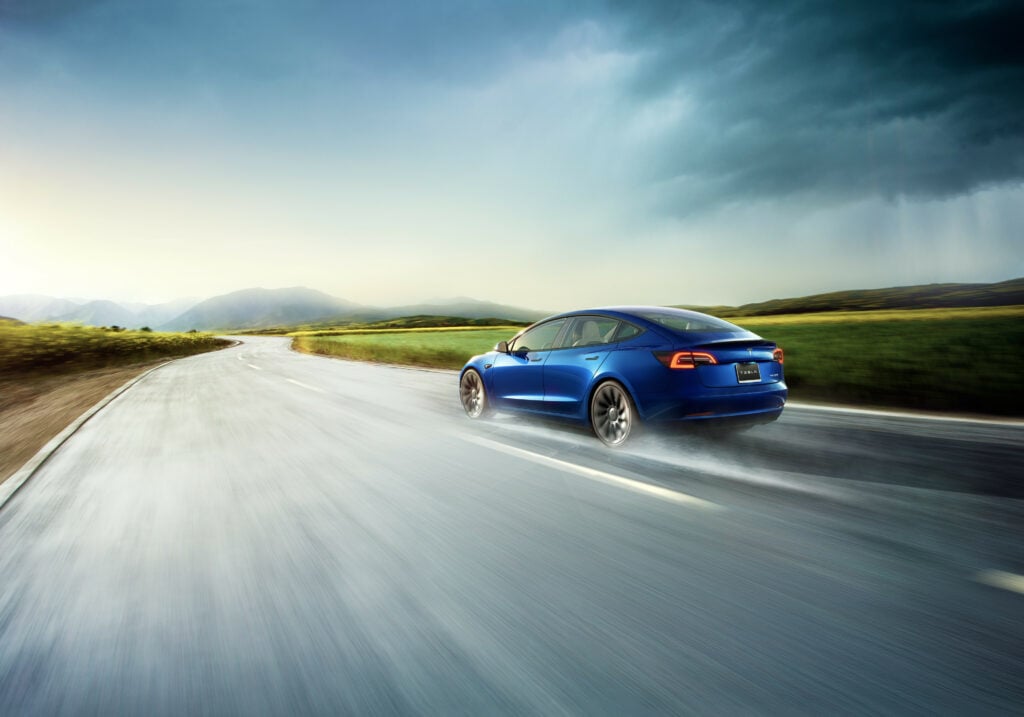
Range: 358 miles
Price: $57,190 with destination
Max charging speed: 250 kW (20-80% in 20 minutes, adding 214 miles of range)
0-60 mph (fun factor):
Federal EV tax credit qualification: No, credits were exhausted. Learn about EV incentives here.
See our full review of the 2022 Tesla Model 3 Long Range here.
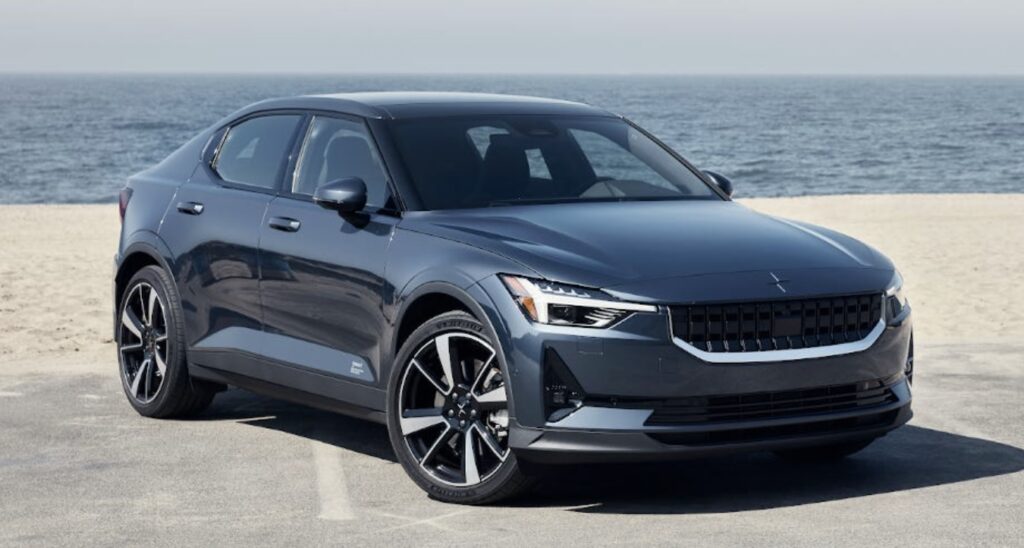
Range: 270 miles
Price: $49,800 with destination
Max charging speed: 250 kW (20-80% in 20 minutes, adding 214 miles of range)
0-60 mph (fun factor): 6.8 seconds
Federal EV tax credit qualification: Yes, learn more about EV incentives here.
See our full review of the Polestar 2 here.
Range: 272 miles
Price: $48,190 with destination
Max charging speed: 150 kW (20-80% in 20 minutes, adding 163 miles of range)
0-60 mph (fun factor): 5.8 seconds
Federal EV tax credit qualification: No, credits were exhausted. Learn about EV incentives here.
See our full review of the 2022 Tesla Model 3 here.
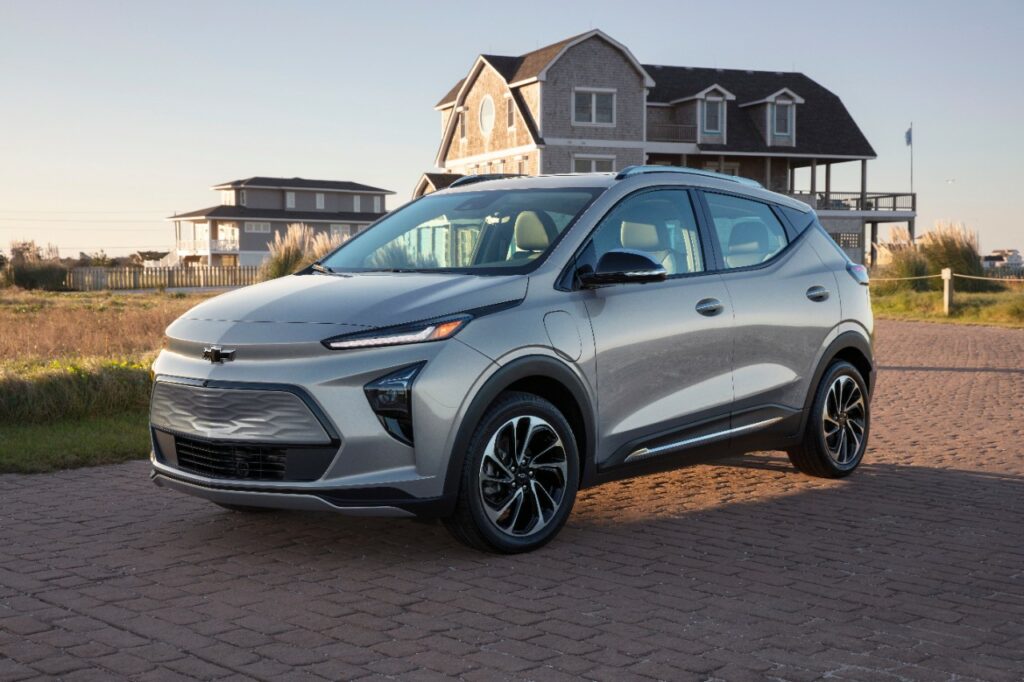
Range: 259 miles
Price: $26,595 with destination (most affordable EV available today)
Max charging speed: 55 kW (adding 100 miles of range in 30 minutes, or 200 miles of range in 75 minutes)
0-60 mph (fun factor): 6.8 seconds
Federal EV tax credit qualification: No, credits were exhausted. Learn about EV incentives here.
See our full review of the Chevrolet Bolt here.
Here’s our list of the cheapest electric cars available today
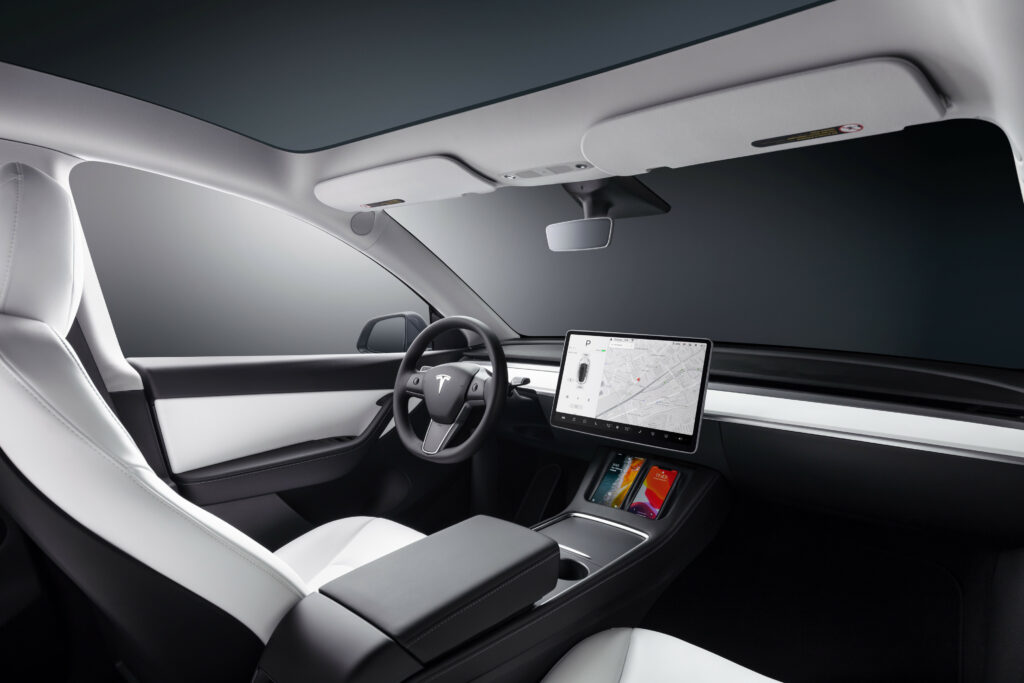
Range: 330 miles
Price: $64,190 with destination
Max charging speed: 250 kW (adding 100 miles of range in 30 minutes, or 200 miles of range in 75 minutes)
0-60 mph (fun factor): 4.8 seconds
Federal EV tax credit qualification: No, credits were exhausted. Learn about EV incentives here.
See our full review of the Tesla Model Y here.

Range: 310 miles
Price: $42,155 with destination
Max charging speed: 235 kW (15-80% in 20 minutes, adding 217 miles of range in 18 minutes)
0-60 mph (fun factor): 7.3 seconds
Federal EV tax credit qualification: Yes, learn more about EV incentives here.
See our full review of the Kia EV6 here.
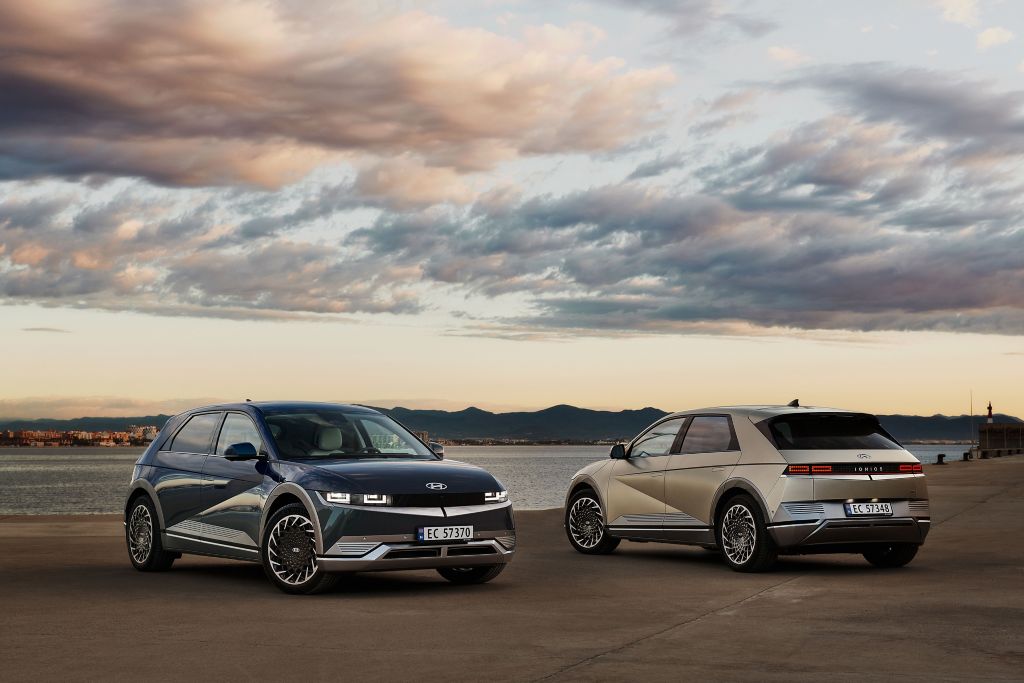
Range: 303 miles
Price: $45,295 with destination
Max charging speed: 235 kW (15-80% in 20 minutes, adding 197 miles of range in 18 minutes)
0-60 mph (fun factor): 7.5 seconds
Federal EV tax credit qualification: Yes, learn more about EV incentives here.
See our full review of the Hyundai IONIQ 5 here.
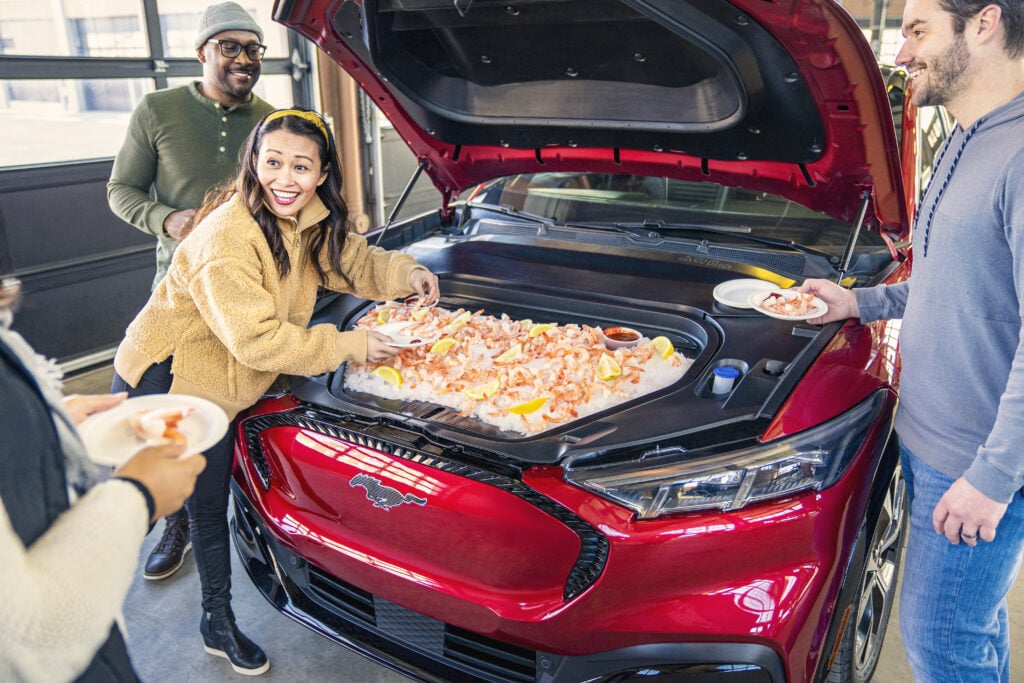
Range: 314 miles
Price: $53,550 with destination
Max charging speed: 150 kW (10-80% in 45 minutes, adding 220 miles of range)
0-60 mph (fun factor): 6.1 seconds
Federal EV tax credit qualification: Yes, learn more about EV incentives here.
See our full review of the Ford Mustang Mach-E here.
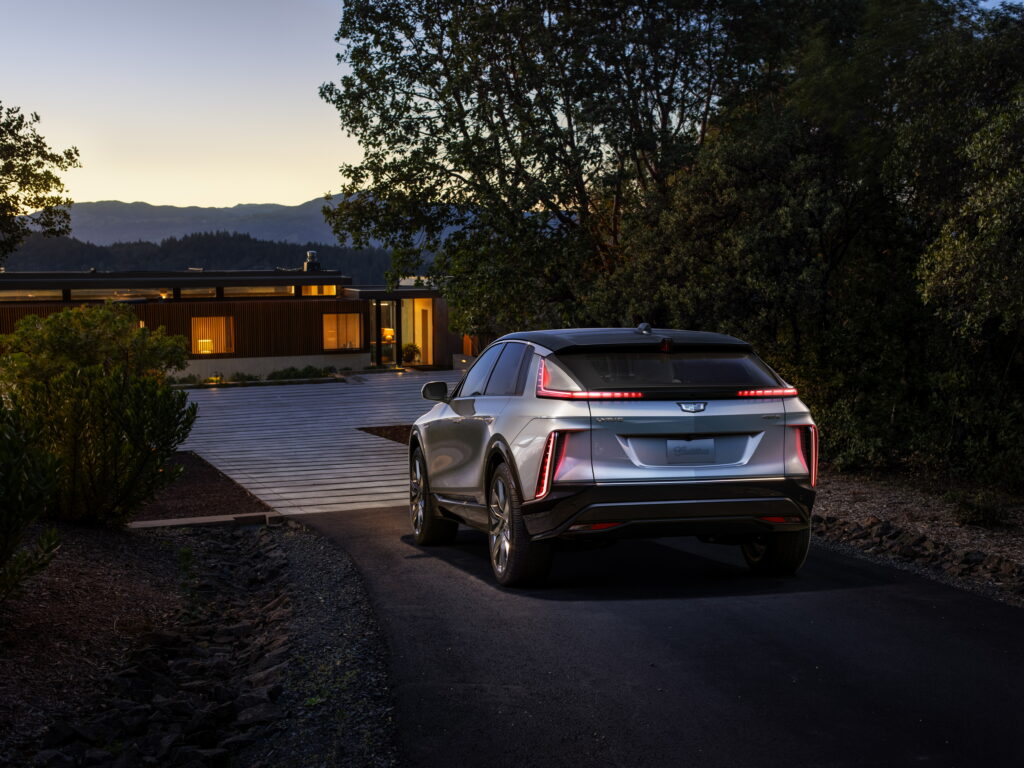
Range: 312 miles
Price: $64,185 with destination
Max charging speed: 190 kW (adding 195 miles of range in 30 minutes)
0-60 mph (fun factor): 6.4 seconds
Federal EV tax credit qualification: No, credits were exhausted. Learn about EV incentives here.
See our full review of the Cadillac Lyriq here.
See the latest EV availability and wait times for EVERY model
There are now three electric pickup trucks on American roads, but buying one is easier said than done. Everyone wants one, and wait lists extend months and in some cases, years. We’ve decided to include electric trucks that are not yet available for purchase, so long as specs have been released and reservations or orders can be placed today.
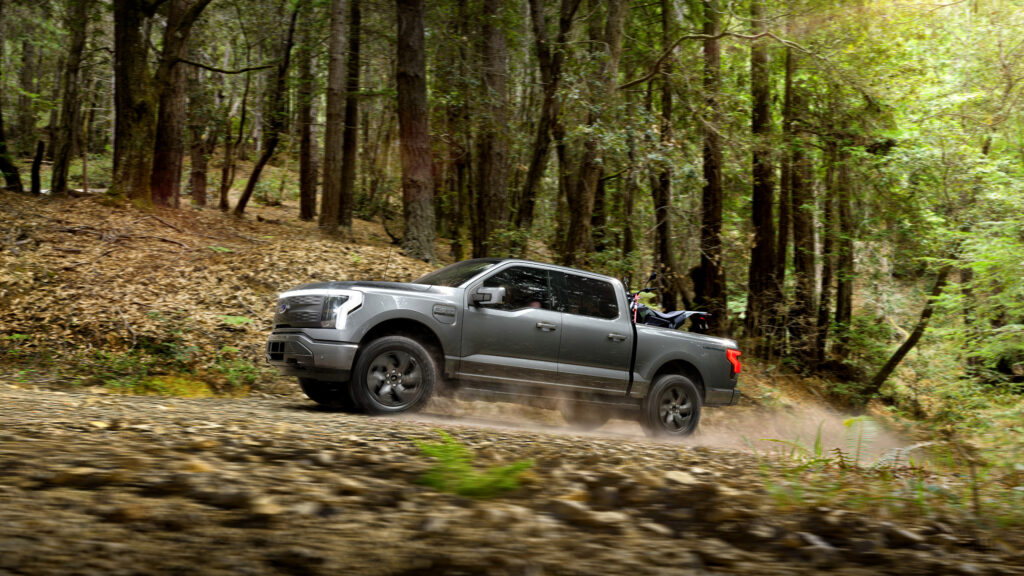
Range: 320 miles
Price: $72,474
Max charging speed: 130 kW (15-80% in 40 minutes)
0-60 mph (fun factor): estimated 4.5 seconds
Federal EV tax credit qualification: Yes, learn more about EV incentives here.
See our full review of the F-150 Lightning here.
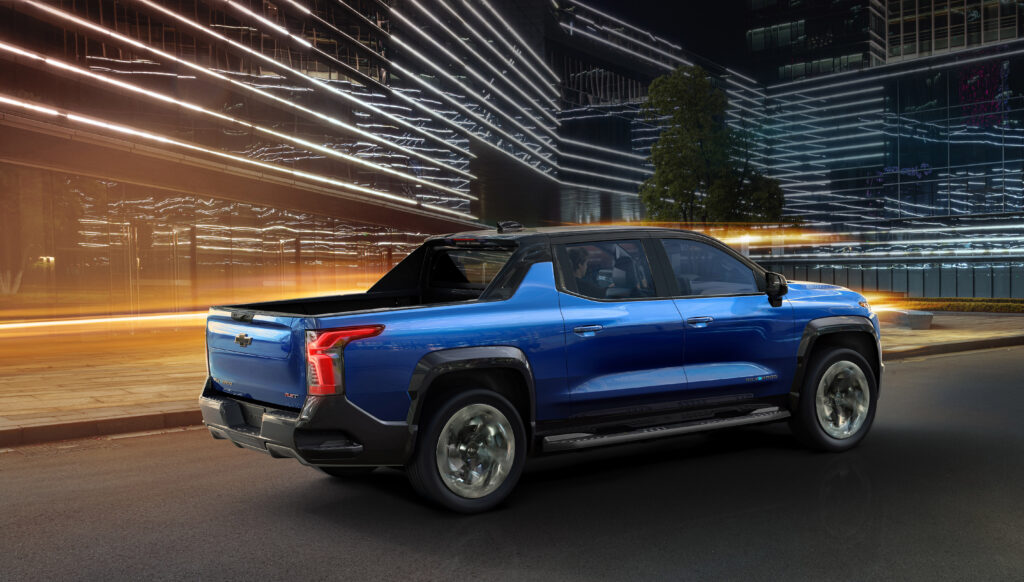
Range: Estimated 400 miles
Price: $42,000 – $100,000+
Max charging speed: 350 kW (adding 100 miles of range in 10 minutes)
0-60 mph (fun factor): N/A
Federal EV tax credit qualification: No, credits were exhausted. Learn about EV incentives here.
See our full review of the Silverado EV here.
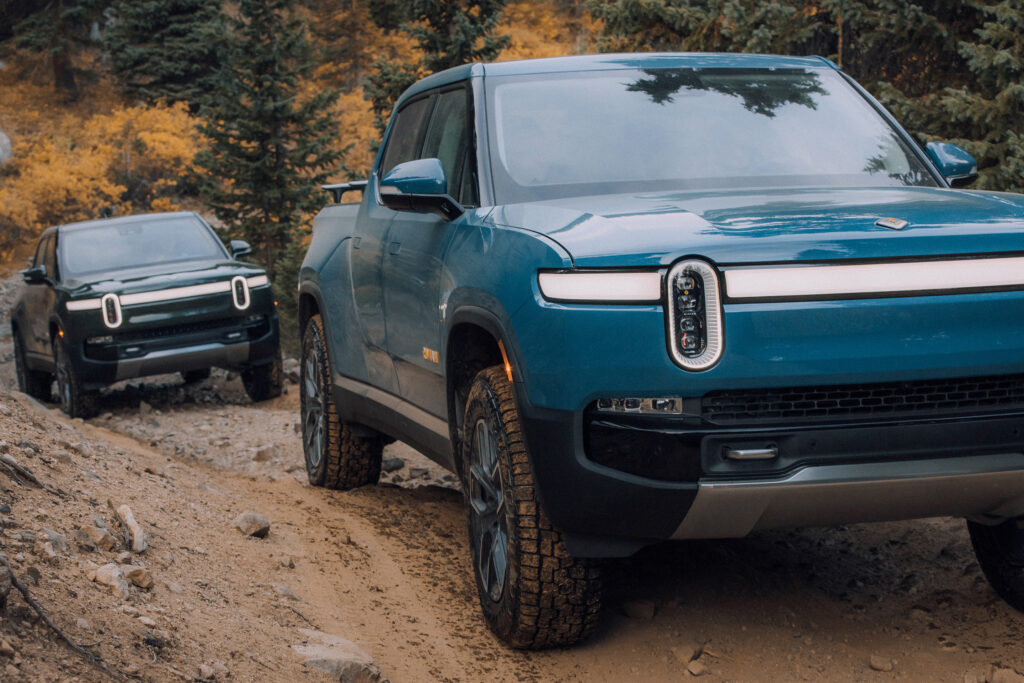
Range: 314 miles
Price: $80,000 – $100,000+
Max charging speed: 220 kW (10-80% in 40 minutes)
0-60 mph (fun factor): 3.0 seconds
Federal EV tax credit qualification: Yes, learn more about EV incentives here.
Learn more about Rivian’s R1T and R1S full-size SUV.
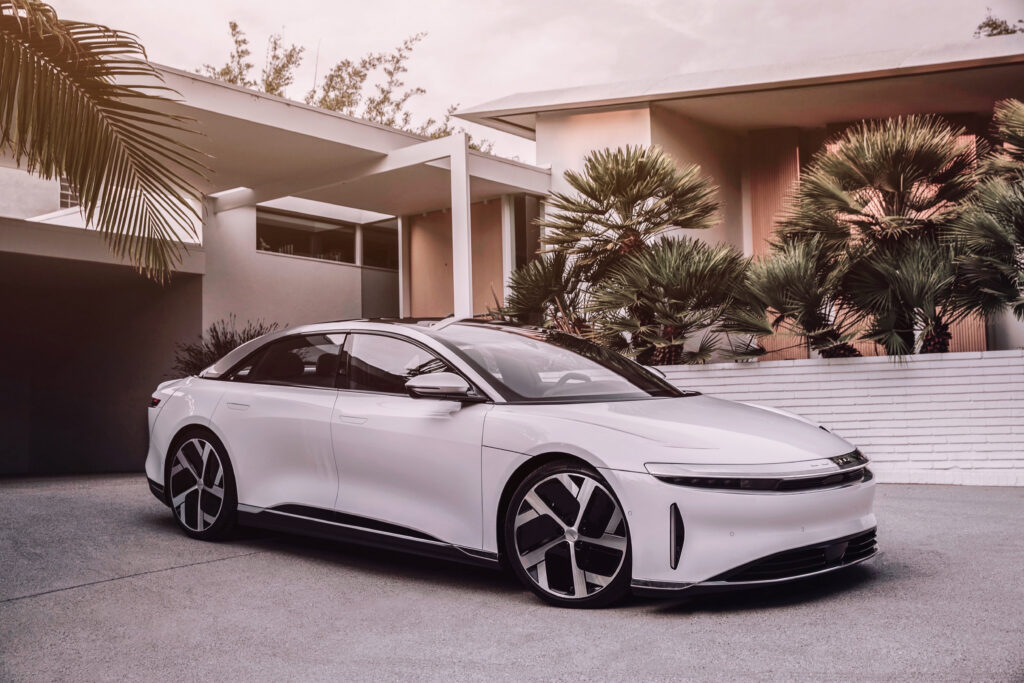
Range: 516 miles
Price: $139,000
Max charging speed: 300 kW (adding 300 miles of range in 20 minutes)
0-60 mph (fun factor): 2.6 seconds
Federal EV tax credit qualification: Yes, learn more about EV incentives here.
See our full review of the Lucid Air here.
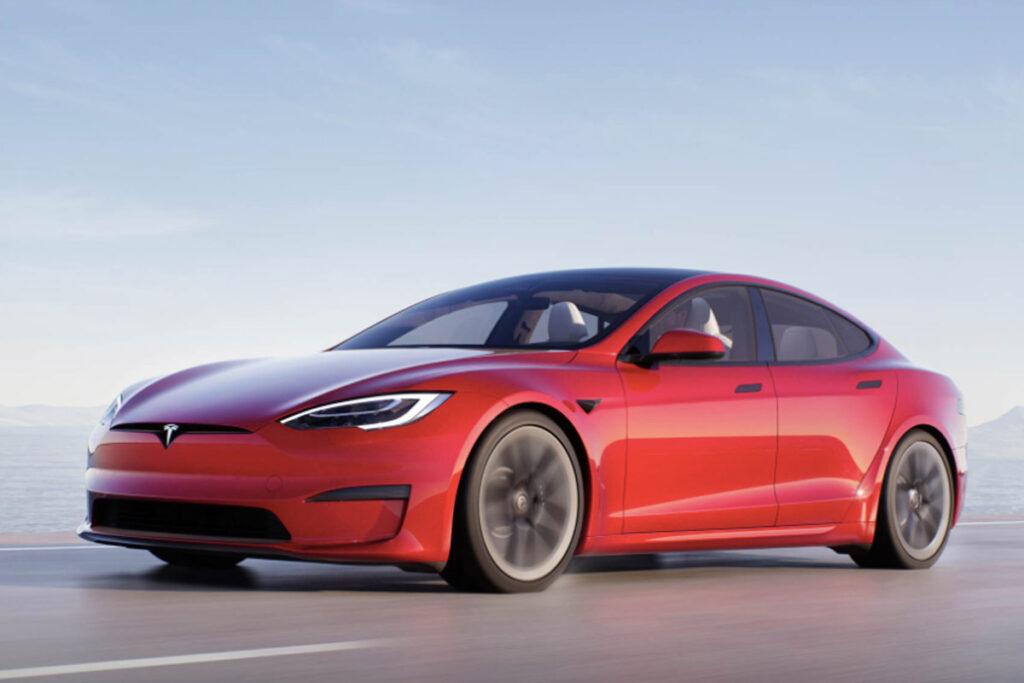
Range: 405 miles
Price: $101,990
Max charging speed: 250 kW (adding 200 miles of range in 15 minutes)
0-60 mph (fun factor): 3.1 seconds
Federal EV tax credit qualification: No, credits were exhausted. Learn about EV incentives here.
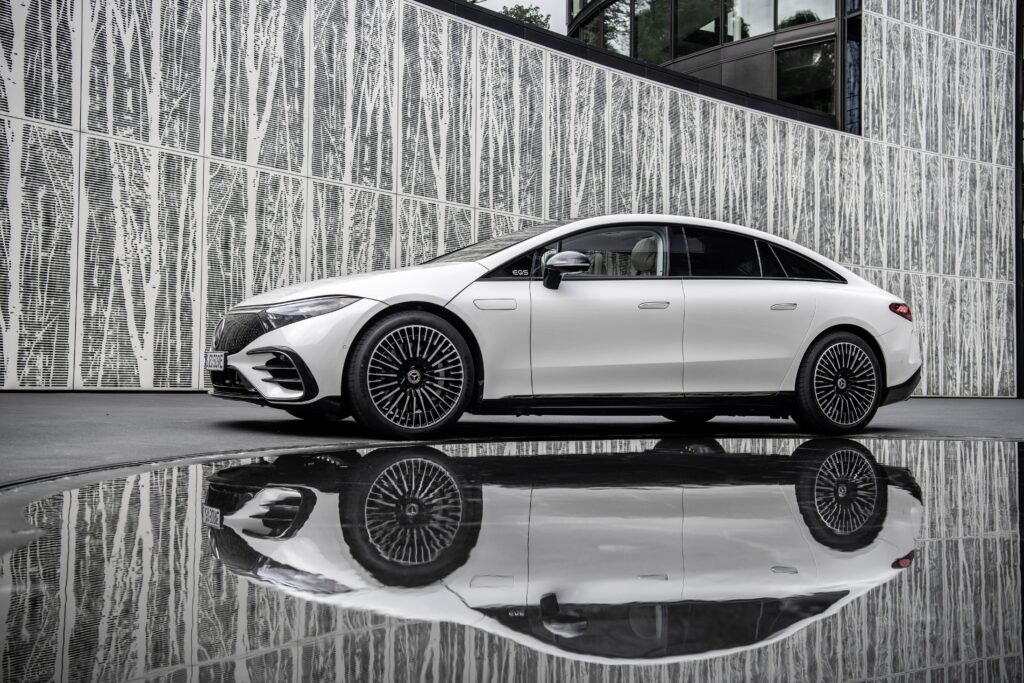
Range: 350 miles
Price: $139,000
Max charging speed: 200 kW (adding 200 miles of range in 20 minutes)
0-60 mph (fun factor): 5.5 seconds
Federal EV tax credit qualification: Yes, learn more about EV incentives here.
See our full review of the Mercedes EQS here.
What does the future hold? Not necessarily more range, surprisingly. Many auto analysts expect range for relatively affordable EVs to settle in around the 250-350 mile range. Why? Battery shortages loom on the horizon. Raw materials are in high demand, and there are only so many places on Earth to get lithium, cobalt and other materials.
Should you buy an EV now or wait? If you can find what you want for MSRP or very close to it, it just might be the right time to buy or lease. All signs point towards higher EV prices for 2023 and 2024 model years.